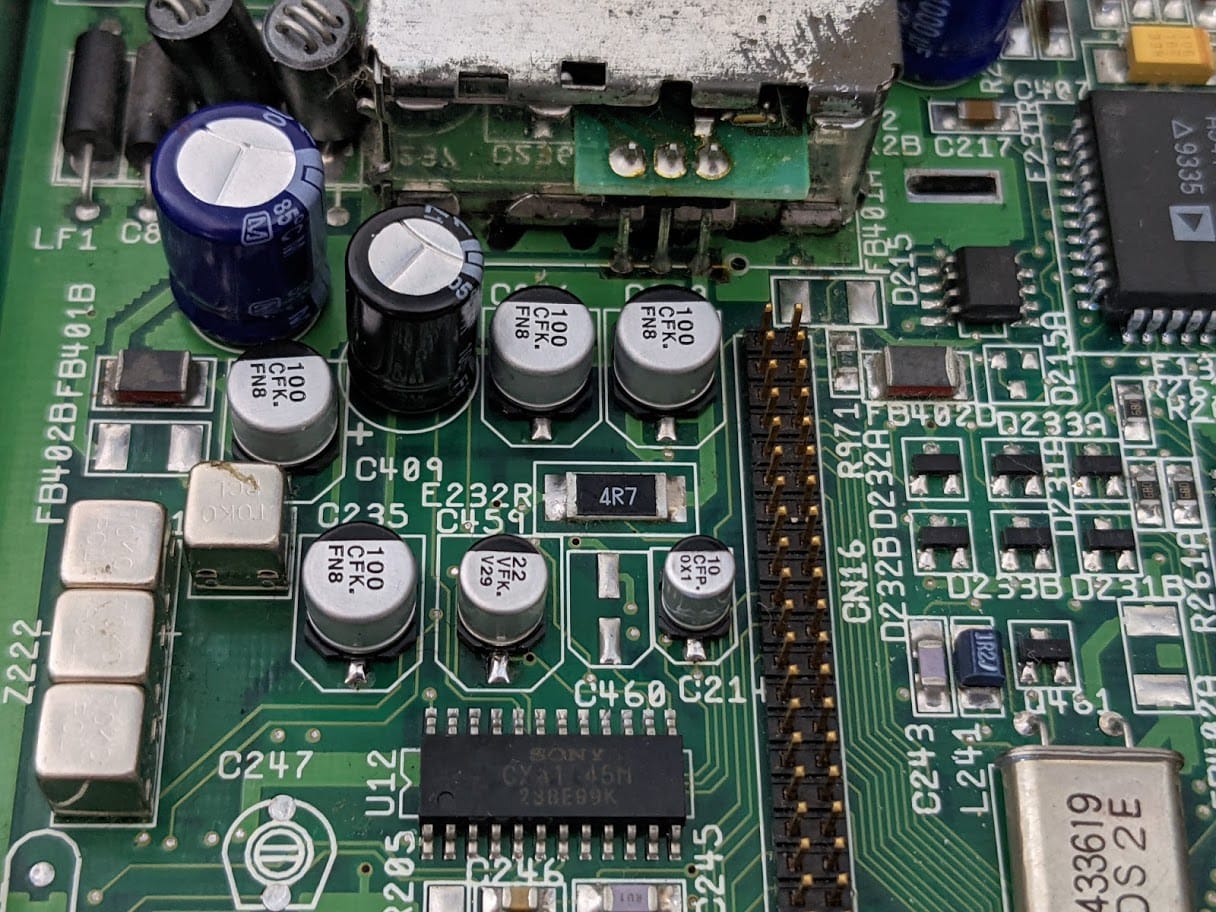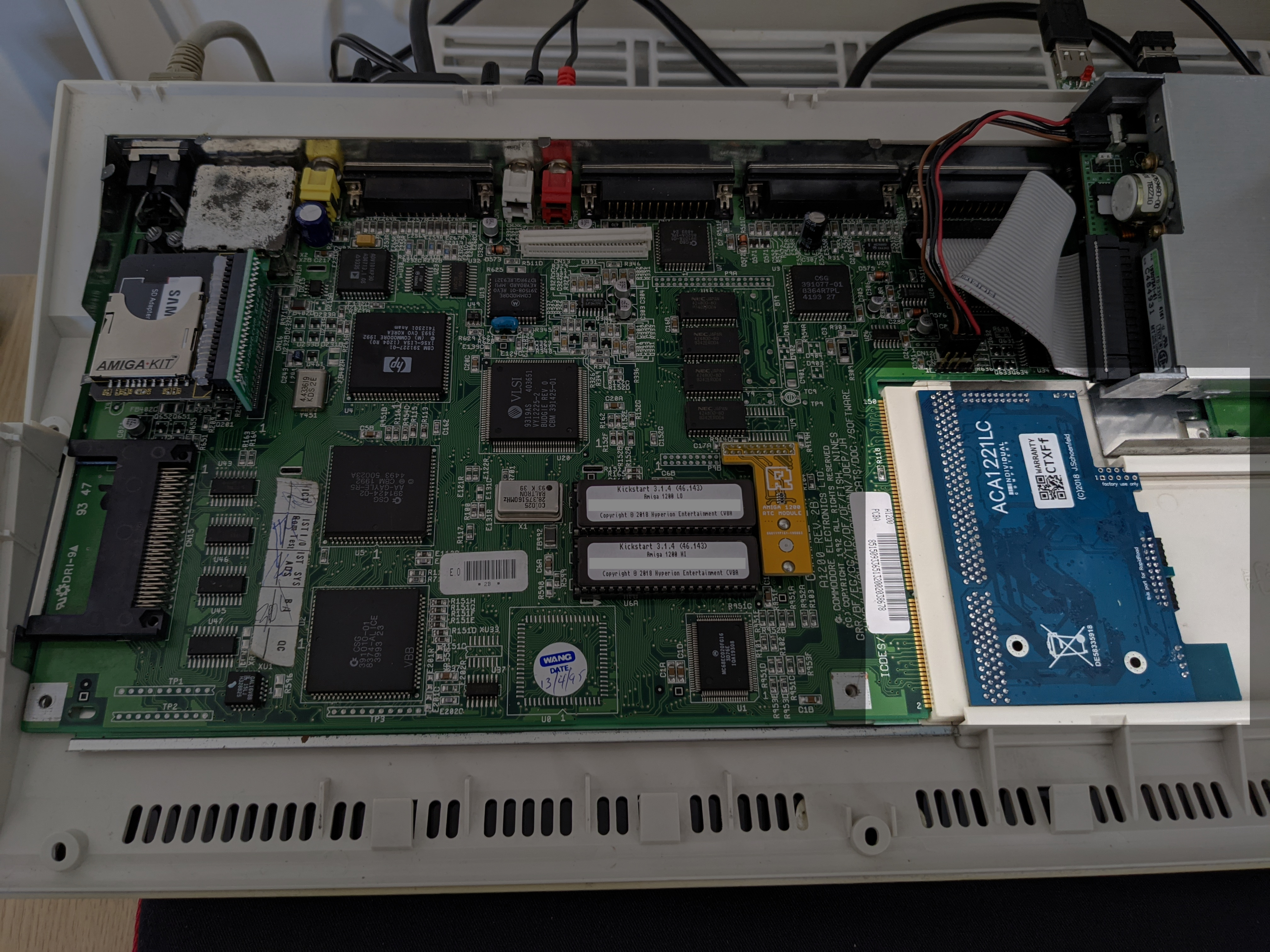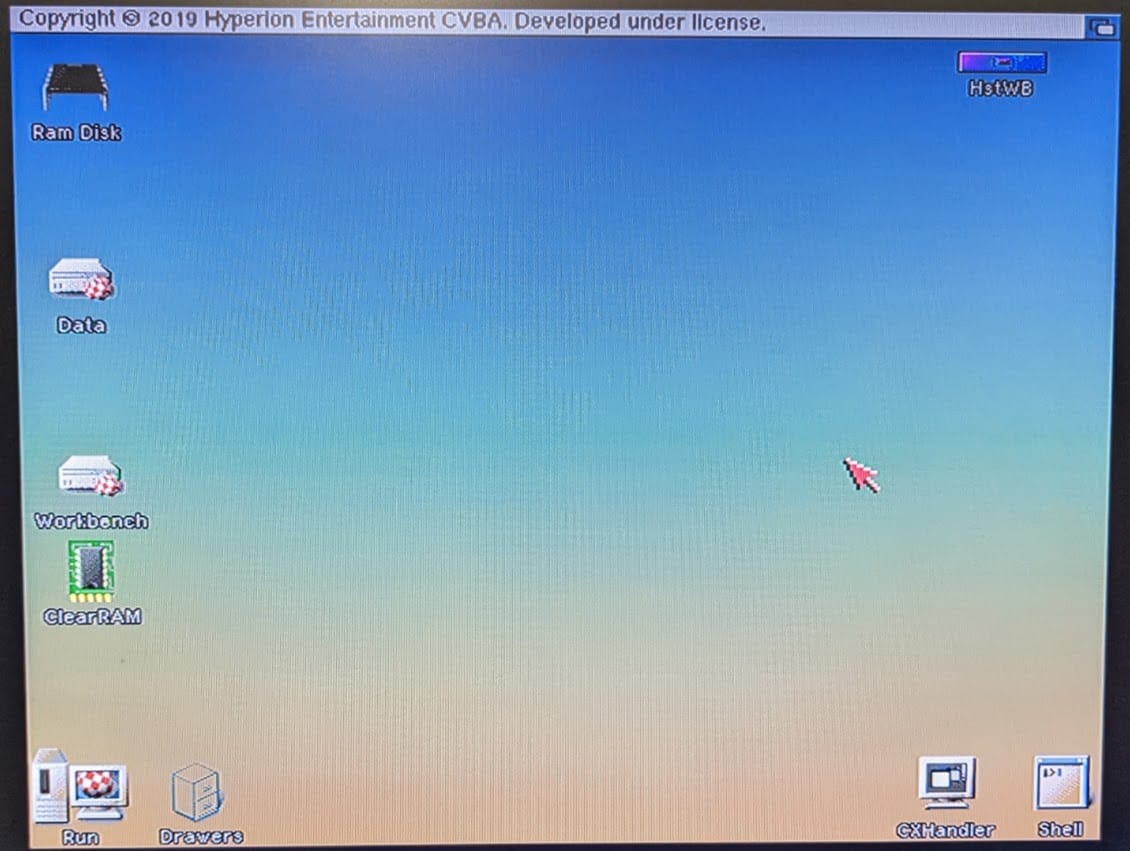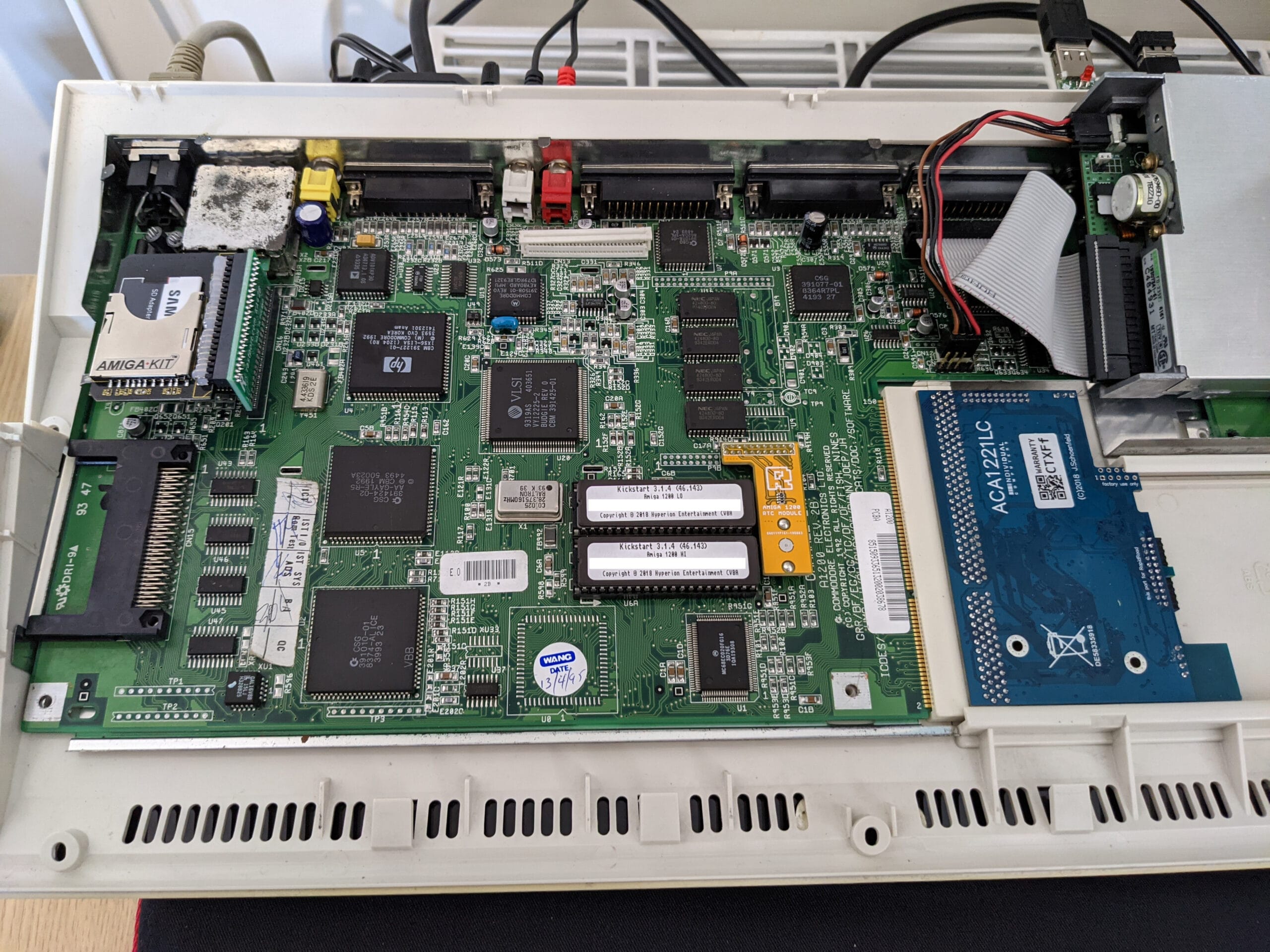Earlier this month I acquired my first Amiga 1200 and repaired the floppy drive in it. I have blogged about how I am connecting it to my home network, but not about all the other work and upgrades I have done to it so far. So, it is time to cover it in this post.
Recapping
The capacitors used in Amiga 1200 and 600 machines are prone to degrading and even leaking over the years. This causes stability issues and can even cause damage to the motherboard. Whilst there were no signs of this on my Amiga, it was only a matter of time. So I replaced the capacitors. For the surface mount capacitors I used a dual-wield technique of two soldering irons to desolder the older surface-mount capacitors to remove them, this only takes a few seconds per capacitor. Then a combination of a heat gun to warm the board up and my desoldering gun to remove the through-hole capacitors. Everything was cleaned up with some solder wick and some isopropyl alcohol before the new capacitors were soldered on using my JCB soldering station and a 0.3mm tip.

Acceleration
I wanted an accelerator for the Amiga 1200 which didn’t break the bank. Mostly for the extra RAM but if I could increase the clock a little then that would be ideal. As much as I would like a 68030 or higher accelerator, they are pretty hard to come by right now and are quite expensive. So, I settled for a new ACA1221lc from Individual Computers. I purchased this from Alinea Computers in Germany and due to it being New Year and the current situations around the UK and Covid postage took a while, but it was worth the wait.
This card has the same CPU as the Amiga 1200 but is accelerated from 14MHz to 26.67MHz, adds 11.2MB of RAM and accelerates other parts of the Amiga such as the hard drive access. This allows me to run Workbench with lots of improvements and WHDLoad games with a high compatibility.

RTC
Since I use workbench a lot, I figured it would be good to have the RTC (Real Time Clock) working so it will keep the time when it is turned off. The Amiga 1200 has a “clock port” which was designed to add an RTC but it can also be used for other things. I went local this time and bought the module from Norfolk based Retro Ready. Simply pop a CR1220 battery in and it fits nicely around the Kickstart ROMs.

Kickstart 3.1.4
As with my Amiga 500 I have upgraded the Kickstart to version 3.1.4, this comes from Sordan.ie in Ireland. This particular kit comes with some useful instructions as the Amiga 1200 uses two ROMs, so you need to put the correct ROM in the correct socket.

SD Card
To install an SD Card adaptor into an Amiga 1200 it is useful to install a special board that not only mounts it to the left of the machine, but correct the voltages so that the hard drive light on the Amiga isn’t permanently on. This typically goes under the name of a “KA 47” and I obtained mine from Amiga Onestop Haven on eBay. The SD Card reader itself is the same one I used in my Amiga 500 purchased from Amigakit. I just removed the IDE cable and connected it straight to the “KA 47” riser.

The downside of this is you cannot put the top metal shield back on, but that does not really impact the usage of the Amiga at all.
Using a Samsung Endurance PRO Plus SD Card I purchased, I used HstWB to install Classic WB ADVSP onto an image file using my laptop which I then wrote to the SD Card.

Cover
No classic computer would be complete without a cover from Sew Ready. I recently reviewed their Amiga 500 cover and I have recently received their new Amiga 1200 cover!

My Amiga 1200 is now in a condition where I can use it as much as I want. There may be more changes coming down the line, but I’m pretty happy with it!


Leave a Reply